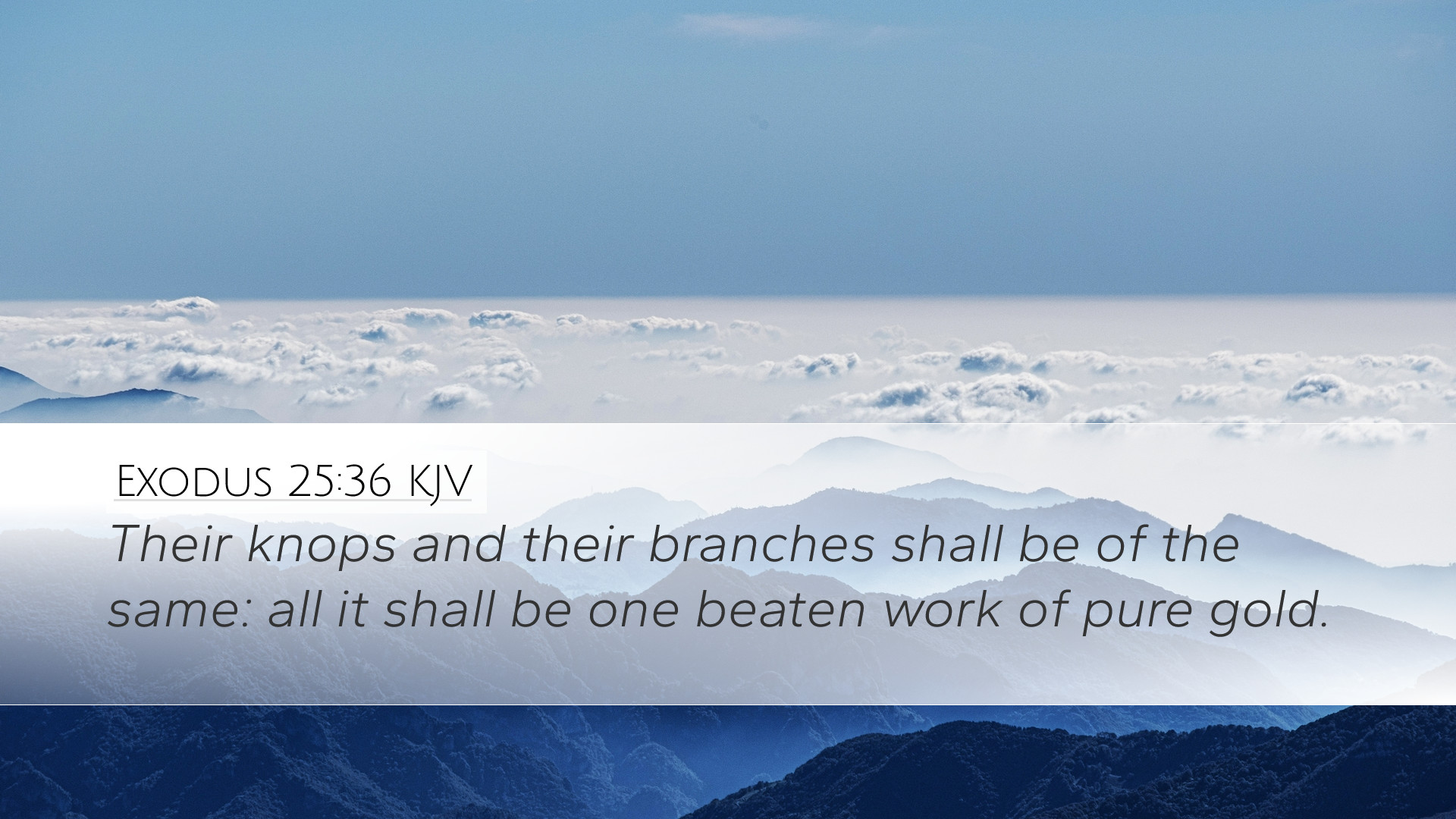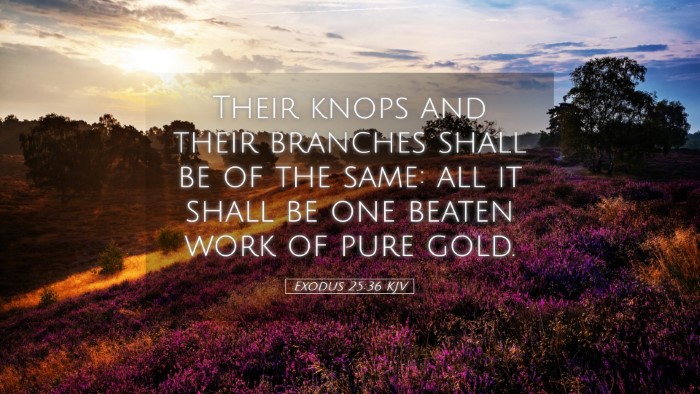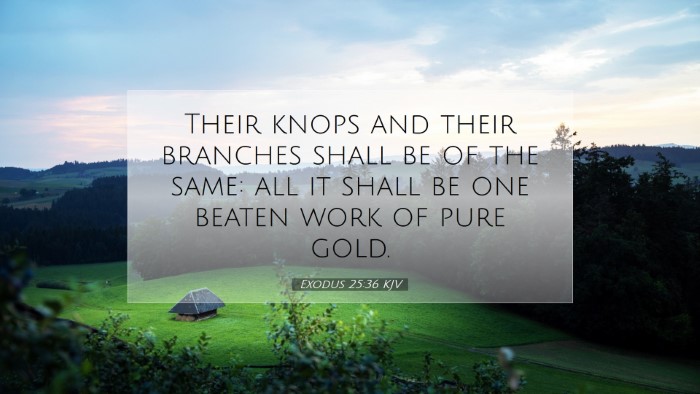Exodus 25:36 - Commentary
Exodus 25:36 reads: "And their knops and their branches shall be of the same; all of it shall be one beaten work of pure gold."
Introduction
This verse is part of the instructions God gave to Moses regarding the construction of the Tabernacle and its furnishings. The focus here is on the design of the lampstand, also known as the Menorah, which is a critical symbol in the Israelite worship and a prefiguration of Christ as the light of the world.
Contextual Background
Moses received detailed instructions from God for the building of the Tabernacle as a dwelling place for Him among His people. The lampstand's design, specifically, serves both a practical purpose and a symbolic one. It represents God's holiness, His light in the darkness, and His provision for His people.
Commentary Insights
Matthew Henry's Perspective
Matthew Henry emphasizes the intricate craftsmanship required in creating the lampstand. He notes that the "knops" (or ornamental bulbs) and "branches" signify the detailed attention to spiritual beauty and unity in God's work. The fact that all parts will be of "one beaten work" speaks to the idea of the unity of the body of Christ. Each component is distinct yet forms a single cohesive entity, a reflection of the Church.
Albert Barnes' Interpretation
Albert Barnes provides additional depth by discussing how the use of pure gold symbolizes the deity and righteousness of Christ. He observes that the beating process required to shape the gold into one piece represents the trials and sufferings that Jesus endured, leading to His embodiment as the light of the world. In this commentary, Barnes also highlights the importance of God's command — that everything He creates for worship must be of the highest quality and purity.
Adam Clarke's Exegesis
Adam Clarke expands on the artistic and spiritual implications of crafting the lampstand. He interprets the design as not only functionally illuminating the Tabernacle but also as spiritually illuminating the lives of those who worship there. Clarke underlines that the lampstand is a typological representation of Christ, the light, and further relates the one beaten work to the essential unity among believers in their worship and service to God.
Theological Significance
This verse, while detailing a physical object, conveys important theological truths:
- Symbol of Unity: The lampstand serves as a symbol of unity within the body of believers, where each member plays a distinct role but is ultimately unified in purpose.
- Divine Illumination: Just as the lampstand provided light in the Tabernacle, Christ illuminates the hearts of believers, leading them to holiness and truth.
- Quality of Worship: The emphasis on using pure gold reflects God’s desire for quality in worship, urging His followers to offer themselves and their lives as living sacrifices, holy and acceptable to Him.
Application for Pastors and Teachers
Pastors and teachers can derive practical lessons from Exodus 25:36 by encouraging congregants to seek unity among themselves, to reflect the light of Christ in their interactions, and to strive for excellence in their acts of worship and service. They can remind their congregants that every aspect of their lives can reflect the beauty and holiness of God, much like the lampstand that was to be crafted precisely per divine instructions.
Conclusion
In conclusion, Exodus 25:36 has profound implications that reach beyond the physical construction of the lampstand. It invites a deeper understanding of unity in the Church, the significance of Christ as the light, and the call for purity and excellence in the worship of our Heavenly Father. By studying the insights from Matthew Henry, Albert Barnes, and Adam Clarke, we gain a richer understanding of the text and its application in our lives today.


